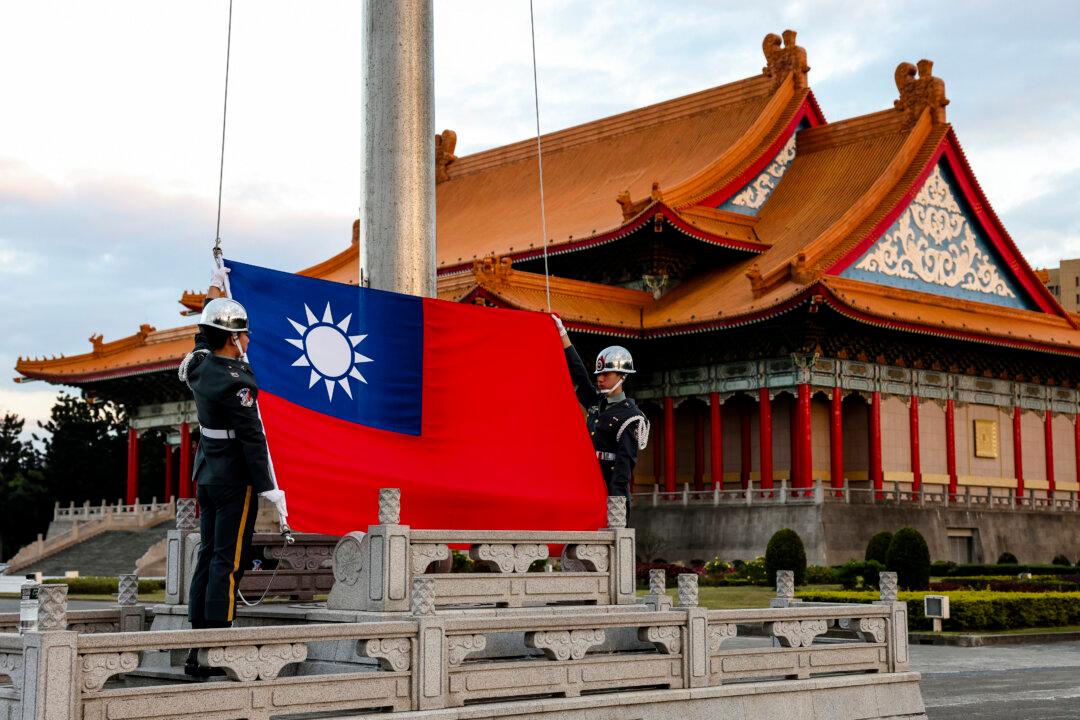Recent remarks by two Chinese businessmen indicate how dependent that Chinese telecoms giant Huawei is on Japanese and U.S. technologies.
Michael Yu, CEO of New Orient Education and Technology Group, a publicly listed company that provides private educational services, shared what an unidentified vice president of Huawei once told him.
“More than half of our technologies regarding IC chips are American patented technologies. If the Americans were to refuse to allow us to use their technologies, we wouldn’t be able to make a single chip. In other words, China wouldn’t be able to manufacture a single smartphone, because we don’t have chips,” Yu recalled while speaking at an education conference in Beijing on Oct. 31, according to Chinese media that reported about his remarks.
An integrated circuit (IC) chip is an electronic device with many functional elements such as transistors, capacitors, and resistors, all fabricated on a semiconductor wafer, such as silicon. IC chips are used to power virtually all computers and electronic gadgets.
Yu added that he once spoke with unidentified Chinese IC engineers about China’s semiconductor industry and whether it had the capability to manufacture chips entirely within domestic assembly lines. They told him that the chips would be too large: Electronic gadgets packaged with entirely-Chinese-made chips would require a backpack to carry them.
Yu’s remarks came just a week after Xu Jingbo, head of a Chinese news website headquartered in Tokyo, told an audience at a manufacturing conference in China that Huawei’s development in smartphone manufacturing was the result of research done by Japanese experts, according to a report by Taiwan’s daily newspaper the Liberty Times.
As Xu explained at the conference, held in Tianjin City on Oct. 23, Huawei opened a research institute in Yokohama, the second-largest Japanese city by population, where more than 400 Japanese engineers are employed.
Huawei’s technological inadequacies exemplify a broader problem that China faces—the country is the world’s largest consumer of semiconductors, but continues to lag in developing domestic semiconductor technology. China’s dependence on foreign technology is reflected in 2017 trade data provided by the China Semiconductor Industry Association (CSIA). Last year, China imported integrated circuits worth about $260 billion—more than the value of crude oil imported by China.
Huawei has also established research institutes in Europe, India, the United States, Russia, and Canada, according to an article published on the Chinese-language site of the Semiconductor Equipment and Materials International (SEMI), an international industry association.
In Canada, Huawei established research institutes in Ottawa, Toronto, Montreal, and Waterloo, employing more than 400 researchers. Their research focus is developing 5G, the next-generation of wireless communication, according to SEMI China.
Huawei’s great strides in developing 2G and 3G technologies were due to the work that was done at the company’s research institute in Russia, according to SEMI China.
Why Is China Behind
There are many reasons why China continues to lag behind traditional powerhouses in South Korea, Japan, Taiwan, and the United States—despite the Chinese regime’s financial support for the industry, as laid out in economic plans such as the “13th Five Year Plan” (2016-2020) and “Made in China 2025.”
Hong Kong daily newspaper, Apple Daily, in an editorial published on Nov. 2, detailed the reasons. Firstly, the United States first invented the semiconductor about 70 years ago. Since the end of World War II, the U.S. industry has built up its own top-to-bottom semiconductor supply chain.
At the same time, China was in the middle of a civil war, and after the Chinese Communist Party (CCP) took over, the Party launched several political campaigns such as the Cultural Revolution, when intellectuals and scientists were deemed counter-revolutionary and severely persecuted. That hindered China’s progress in technology fields.
Within the multi-step production process for IC chips, which includes design, fabrication, packaging, and testing, China’s greatest weakness lies in IC design, according to Apple Daily. China is yet unable to develop its own design software, known as electronic design automation (EDA) tools. Such software development is currently dominated by U.S. companies such as California-based Synopsys and Cadence.
Without the ability to develop design software, China’s ability to design IC chips is limited. That subsequently affects the ability to optimize the assembly process for more advanced IC chips. China’s IC assembly process is also limited by the inability to acquire the necessary production equipment.
One of the production steps is the lithography process, a way of transferring IC circuit designs to semiconductors from which components such as transistors are made. As chips become smaller, more advanced lithography tools are needed.
Also, as chips get smaller, they deliver more performance-per-watt, meaning that they run at a faster speed while consuming less power.
A recent innovation in lithography involves the use of extreme ultraviolet light (EUV). The only company in the world that currently makes EUV equipment is Netherlands-based company ASML, according to Apple Daily. However, ASML prioritizes producing its limited EUV equipment for its stakeholders, including Taiwan-based contract manufacturer TSMC, Samsung, and Intel. Even if China orders EUV equipment from ASML now, it would be several years before taking delivery.





